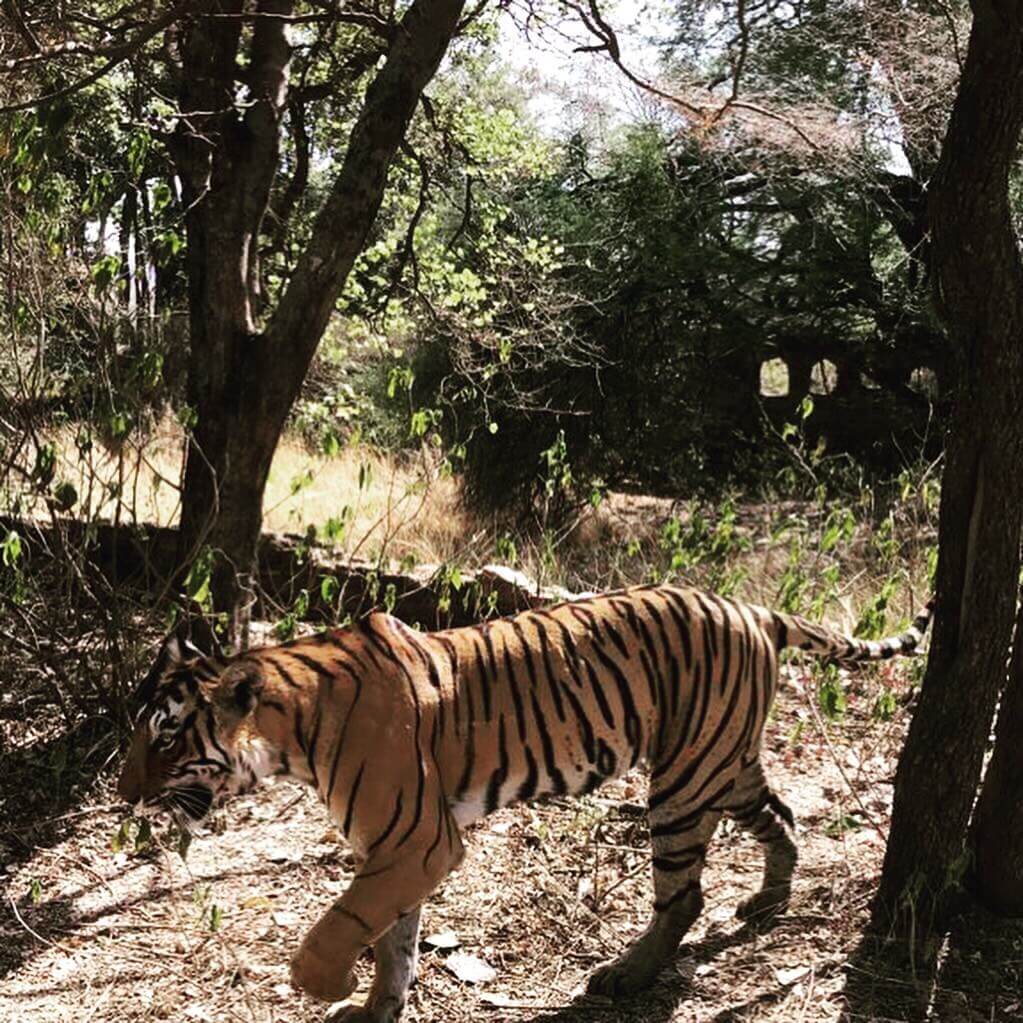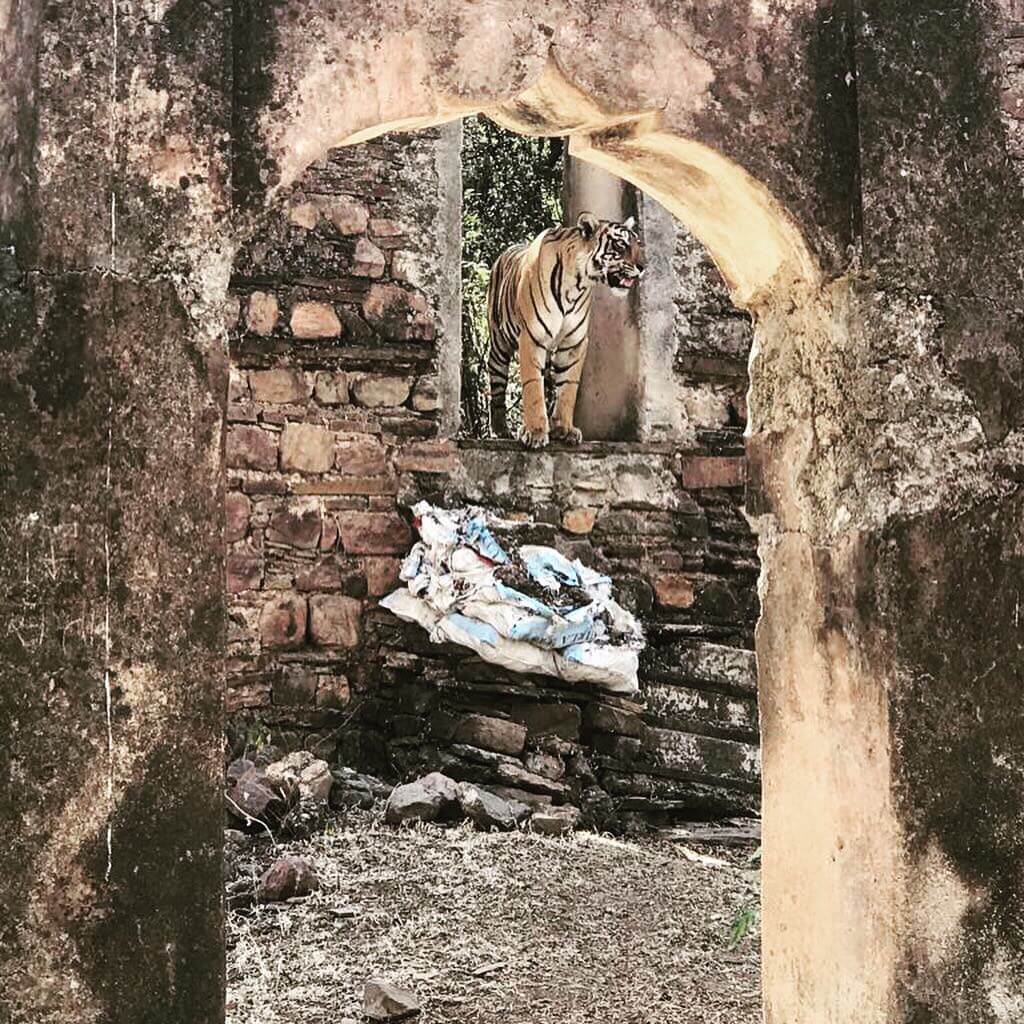My first encounter with a Tigress
29 July, 2019
Aniruddha Ghosh
It wasn’t my first time in the wild. Having spent the better part of my childhood in Dehradun, going in to the forest for treks was a way of life. I’d grown up learning to love being in the wilderness, respecting nature and its ways — interestingly, during our mid term treks, we had learnt the importance of steering clear of wild animals, and animal proofing our tents, so as to not get attacked at night.

And there I was, venturing in to Ranthambhore Tiger Reserve, one of the forests with the highest density of tigers in India, in an open Gypsy and hoping to run in to a Tiger or two. How the times had changed!
I’d often heard stories while travelling in the forests of Uttarakhand, that leopards or tigers had come and picked up cattle that belonged to

It was 6 in the morning — and I was sitting in the Gypsy, soaking in the beauty of the forest. What a relief it was after the hustle and bustle of the city. As a child, and until this trip to Ranthambhore with a few friends, I’d never seen a Tiger in the wild — and quite frankly, I never harboured any ambition of doing so either. I didn’t quite get the obsession. What was it that drew some of my friends back to the forest every chance they got? At the end of the day, the Tiger is an apex predator!
Dawn turned to noon, the sun started beating down on us, and I started complaining about the sweltering, dry heat. Ranthambhore is in Rajasthan — the famous desert state of India — and though it doesn’t look like it, the heat surely makes you feel like you’re in a desert. From the morning we had managed to see a few pug marks, many deer and
“It’s afternoon, it’s hot, and she will surely be resting at her palace… let’s go there and wait,” he said. He was talking about Arrowhead, the reigning queen of the Ranthambhore Lakes — the most picturesque and unique of tiger territories. The palace he referred to, is a former hunting palace on banks of the lake, built for the maharajas, which is now in ruins — and part of the national tiger reserve. The irony is not lost on us, that what was once a spot where humans would rest and hunt tigers when they came to drink water — is now where the supreme tigress of the jungle rests, as she waits for her next meal — a sambhar or deer to come along to have a sip of water in this heat.
We went along to a vantage point on the other side of the lake palace, which gave us a full view of its ramparts, found a bit of shade and decided to wait a while. I had just begun to doze off, when all of a sudden there was excitement in the Gypsy. Bobby had spotted Arrowhead — sure enough — resting in her palace. She was very far away and I could hardly see her with the naked eye, but it surely piqued my curiosity. All of a sudden I was alert and hoping that the tigress will wake from her slumber and start moving.
“She hasn’t hunted in a few days,” Bobby told us. She was sure to get up and get on the move sooner or later. Eventually, Arrowhead got up and moved ever so stealthily, back inside the palace.
“She’s gone — now what?,” I said. “I know exactly where!,” exclaimed an excited Bobby as he told our driver to rush towards the exit of the palace — we reached there within a couple of minutes.
We pulled up to a small stone gateway. “I hope we haven’t missed her — this is the route she is definitely going to take!” said Bobby.
“Unless she’s gone back to sleep,” I mumbled, reflecting my apparent disappointment after the initial excitement.
And then it happened.
Arrowhead walked straight into the stone arch, ever so majestic. She paused there for a few seconds, took a good look around, just as a mighty queen would survey her kingdom. And in that moment felt a multitude of emotions that I can best describe as a mix of fear, excitement, adrenaline and wonder. As I felt her cold, steely gaze, my heartbeat got quicker, palms got sweaty, fingers trembled for a bit, and for a while, I even forgot that I was supposed to take a photo.
She got off the gateway and walked towards our Gypsy. The closer she got, the bigger and more dangerous she felt. It was as if I was frozen, but the adrenaline was flowing — we were literally at her mercy. One leap and she’d have been in the Gypsy, one swipe of that mighty paw, and we’d probably be dead.
She didn’t even look at us. It was as if we didn’t exist for her. She walked gracefully on — and then sat back down, probably deciding that she needed to laze around for a bit more. She was right there! Within metres of our gypsy, comfortable in our presence, and we in hers. The whole experience was surreal — it was as if she decided to pose for us. By this time, I had gathered my wits, and I picked up the camera to get clicking.
We actually had enough time for Bobby to explain to us why she’s called Arrowhead — because of the stripe pattern on her forehead, that resembles an arrowhead. We could see it clearly, and it was beautiful – I’d never seen a creature so graceful, so majestic, so relaxed — and yet so dangerously awesome!
In a few minutes, she decided to get up and get on the move again. This time she was walking with purpose — and a slow walk turned into a jog, the birds and monkeys started making their warning calls, the deer and sambhar started making a run for it… and before we knew it, Arrowhead broke in to a leap and sprinted into the dense forest, way too fast for us to even attempt following her.
“So Sir, I told you I’ll get you to see her, didn’t I?” Bobby said, with the excitement still visible in his eyes. It was amazing how, for a man who has tracked tigers for a living for the past 30 years, the excitement of spotting a tiger is still the same.
As rumour has it, that once a tiger tastes human blood, it becomes a man-eater and seeks out only humans thereafter. It’s much the same with humans — once you spot a tiger in the wild, have such great encounter up close and personal, you’ve proverbially tasted blood. I came back to the lodge that evening satisfied that I’d seen my first tiger, but excited and eager to see more. As they say, this is a story that’s just begun!
Subscribe to our blog
Get the latest posts in your email
